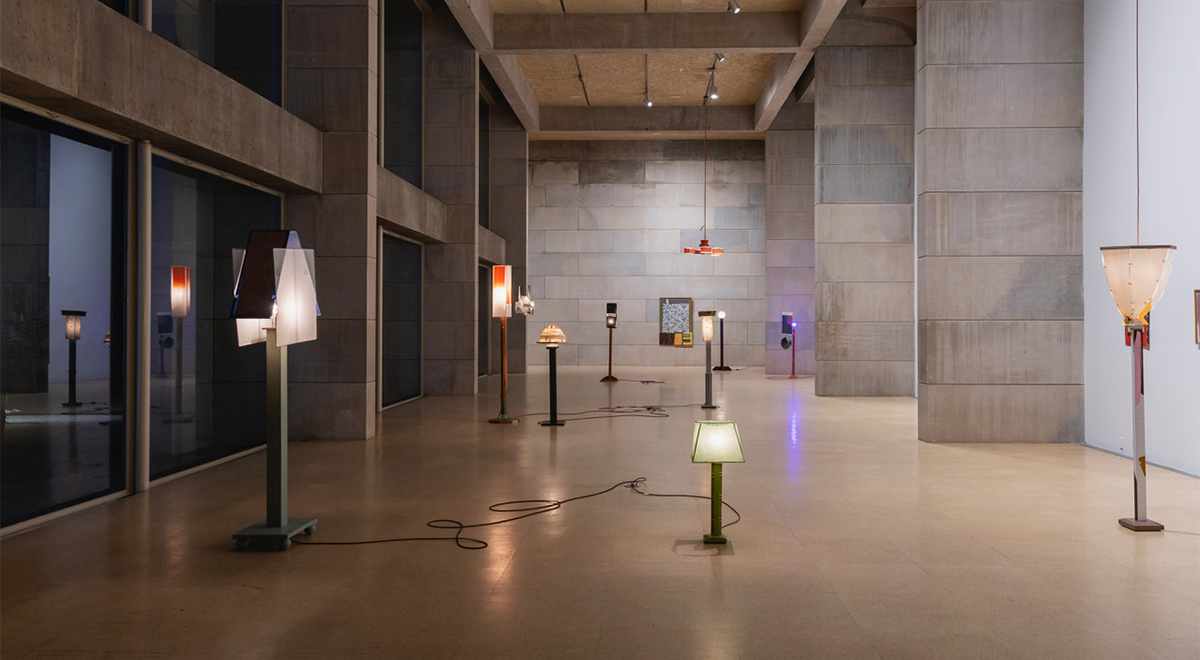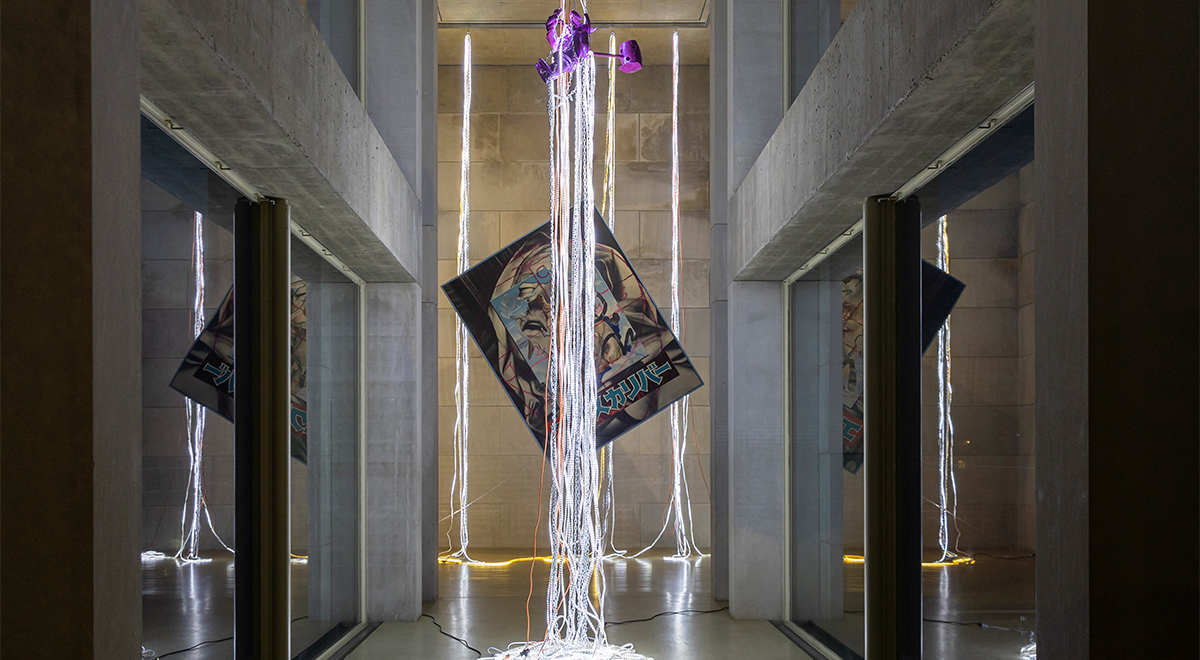Chris Domenick, Parker Ito Reimagine Painting in Zilkha Gallery

When artist Chris Domenick stood in the monumental Main Gallery of the Ezra and Cecile Zilkha Gallery, he observed the way light from the building’s windows worked with his new installation. “It’s so cavernous and incredible and the light is so amazing,” he said. The moment marked a milestone—his first solo institutional exhibition, Private Figure, a show that combines floor- and ceiling-based lamps with wall works by the artist.
The Zilkha Gallery, Wesleyan University’s home for contemporary art since 1973, is known for encouraging artists to take risks that may not be as welcome at more traditional gallery spaces. For Curator and Associate Director of Visual Arts Benjamin Chaffee ’00, that mission is central to his work. “I am really looking for the gallery’s program to tell a story that is as broad as possible about who can be an artist and what art could be,” Chaffee said.
Currently, the gallery hosts two exhibitions that explore the boundaries of painting and sculptural installation. Within Domenick’s Private Figure, his sculptures are lamps that behave like designed objects while also blurring the line between sculpture and painting, encouraging new ways of seeing. The artist reimagines each of the frames around his wall works as sculptural gestures. “It begins to bring the frame and the making of the work into one realm,” Domenick said. “Because it becomes sort of like a sculpture, it starts to point to the space around it. It’s almost like you get to learn from the wall works how to look at the lamps.”
Installed in Zilkha’s North Gallery is Parker Ito’s A Lil’ Taste of A Lil’ Taste of Cheeto in the Night, a reimagining of a painting first exhibited in Los Angeles a decade ago. Ito’s approach to artmaking is very collaborative; his painting People tell me everyday that I’m really creative (peace on earth) (A Lil’ Taste of Cheeto in the Night Installation) (2013–2015) began as an Adobe Photoshop collage and was outsourced to China for painting before being completed back in his studio with various additional painted layers. “The way I’ve always described it is a kind of ‘style as content,’” Ito said. “It’s just about the aesthetic.”
When Chaffee brings two artists like Ito and Domenick together, he is curating two simultaneous solo exhibitions that he hopes viewers can engage with on many different levels. “I think a lot about the reference points that a viewer might bring into the gallery and how those intersect with the references that each artist’s work already contains,” Chaffee said, “Then I consider how each exhibition might either contrast with, or build on the discourse of what has been shown in the gallery in the past. I believe that every past exhibition and artwork still exists in the space as a kind of ghost.”

For Ito, that dialogue extends beyond the walls of the gallery. As part of his exhibition, he shipped a bronze sculpture—Western Exterminator / Kernel Kleenup / Little Man / Pesterminator (automotive pink) (2013–2015)—from Los Angeles during the Southern California wildfires in January, integrating it into a larger installation of LED lights and 500 feet of chain that frame his double-sided painting hanging from the gallery’s ceiling. “This is a more minimal presentation of the installations I was doing from that time,” Ito said. “It is well suited for this space because it’s so vertical and so tall. I don’t know if I’ve ever done one in a space this tall before.”
Chaffee sees the Zilkha Gallery as a place where such risks and reimagining of works are not just welcomed but encouraged. “We’re not a collection space,” he said. “We build projects with artists.”
And for both Domenick and Ito, that spirit of collaboration and experimentation is what makes their exhibitions at Wesleyan so meaningful. “The Zilkha Gallery has a long history of supporting artists to develop installations in response to the unique architectural space within the dynamic intellectual liberal arts community of Wesleyan,” Chaffee said. “As the curator, I try to extend invitations to artists who will not only appreciate this opportunity and rise to its challenges, but also build on the history of past exhibitions. Also, I think if the artist is really engaged, they’ll make a more interesting show. And the audience will have a better time. Can we find that place where everybody can benefit?”
Private Figure and A Lil’ Taste of A Lil’ Taste of Cheeto in the Night are on display through March 2. Learn more at www.wesleyan.edu/cfa/zilkha.

